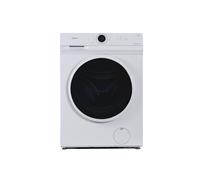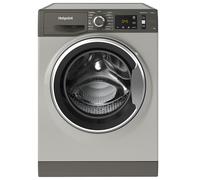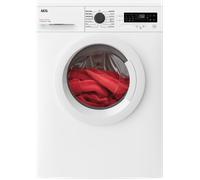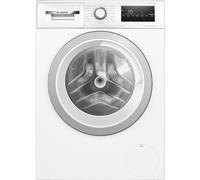Note: This text was created with the help of AI.








































- 1
- 2
- 3
- 4
- 5
- next page
Exciting Offers on Washing Machines
Step 1: Loosen the transport lock - Follow the manufacturer's instructions. Keep the lock in a safe place, you will need it when transporting the machine again.
Step 2: Attach the drain hose - Insert the supplied drain hose into the drain connection and secure it with a hose clamp. Make sure the hose is tight, but not kinked or squeezed.
Step 3: Install the inlet hose - Attach the inlet hose to a faucet for the fresh water supply with a sleeve. Again, make sure there is no kink in the hose.
Step 4: Connecting to the mains - Insert the plug into the socket.
Step 5: Test run - Start the wash cycle, preferably in the short-time programme, once without laundry in the machine and test whether water comes out at the inlet or outlet. If this is not the case, your washing machine is connected correctly. If it is dripping somewhere, you need to repair it.
In addition, the construction of the top loader has the decisive advantage that the rubber seals do not wear out so quickly.
Connecting the washing machine to the hot water definitely reduces electricity consumption. However, this is only financially worthwhile if your household has a very efficient variant of hot water generation, such as a solar thermal system.
Remove the detergent drawer and the lint filter, clean them both and replace them. Then dissolve one hundred grams of citric acid in two litres of water and fill the mixture into the detergent drawer. Now simply run the wash cycle in the boil wash programme without pre-wash. That's it!
Of course, you can also use commercially available descaling agents instead of citric acid - follow the instructions for use.
Ideally, you should descale your washing machine once every six months. If your water contains a lot of lime, you should add descaler with every wash cycle to prevent stubborn deposits.
The fact that your washing machine does a little dance during the spin cycle can have various causes: You forgot to loosen the transport lock, the machine is not exactly aligned or the floor condition is to blame. There is a simple solution to each of these problems.
Inside the washing machine, a stone plate serves as a counterweight that balances the drum. To do this, it must be movable. During transport, however, the plate is fixed. If the machine is put into operation with the transport lock fastened, it can happen that it wanders. In this case, loosening the securing device will remedy the situation.
If this is not the case, check with a spirit level whether the washing machine is really level, both in width and depth. If it does not, adjust the feet of the machine by turning it so that it does.
If the alignment is not the cause of the wandering either, the surface is probably too hard or too soft. Depending on the case, a stable plate or a soft rubber mat to place underneath will help in this case.
If you have enough space to place a washing machine and a tumble dryer, then it is always recommended to buy both for a simple reason: If one of the machines breaks, all you have to do is replace the one that is not working anymore. If you only use one for all and your washer-dryer breaks and has to be replaced, it will be a lot more expensive, as washer-dryers cost more than a single washing machine or a single tumble dryer.
Buying both machines separately also comes with another advantage: it gives you more choices in combining the precise characteristics you need in a washing machine and tumble dryer, i.e. maximum wash and dryer load, spin speed, energy rating, timer function, etc.
Most manufacturers recommend to use liquid detergent because it cleans your clothes more thoroughly, especially in hard water. If you use powder detergent in hard water you will need to increase the amount of powder to achieve the same result.
There are also differences in the use of detergent for toploaders and front loaders. Since front loaders use less water it is recommended to use an HE (highly efficient) detergent. It achieves a proper clean without leaving any residue or damaging your frontloader washing machine.
You can find all kinds of detergents for washing machines in our category “Laundry Detergents”.
Exciting Offers on Washing Machines
When it comes to laundry day, choosing the right washing machine can make all the difference. At pricehunter.co.uk, you’ll discover a variety of offers that cater to every need, from standard size models to energy-efficient options. Let’s explore the most essential aspects to consider when you’re looking to find the ideal washing machine for your home.Understanding Different Types of Washing Machines
Selecting the right type of washing machine is crucial for fulfilling your laundry needs. The choices you make can significantly impact your overall experience.- Standard size washing machines - Typically offers a capacity of 7-10kg, suitable for average households.
- Front-load machines - Known for their efficiency and gentler wash cycles.
- Top-load machines - Easier to load and unload, but can use more water.
- Compact models - Perfect for smaller spaces or apartments.
- Washer-dryer combos - Saves space and time by combining washing and drying in one unit.
Popular Brands to Consider
Brand reputation can greatly influence the performance and longevity of your washing machine. Knowledge of leading brands helps you shop confidently.- Samsung washing machine offers - Known for innovation and advanced technology.
- Bosch - Renowned for their reliability and energy efficiency.
- Hoover - Offers a wide range of models catering to various budgets.
- LG - Features smart technology and sleek designs.
- Miele - Premium brand with a focus on durability and high performance.
Essential Features to Look For
Understanding the critical features of washing machines can help you select one that meets your lifestyle needs. Here are some to keep in mind:- Energy-efficient washing machines - Designed to minimize water and electricity consumption.
- Load capacity - Choose a size that suits your household’s laundry needs.
- Spin speed - Higher RPMs mean less drying time.
- Wash programs - Variety of settings for different fabric types and levels of dirt.
- Noise level - Look for models that operate quietly, especially in open living areas.
Smart Technology Integration
With advancements in technology, washing machines now come equipped with smart features that enhance convenience and control.- Washing machines with timer - Allow you to schedule washes according to your availability.
- Wi-Fi connectivity - Monitor and control your machine remotely via a smartphone app.
- Smart sensors - Automatically adjust water and detergent levels based on load size.
- Integration with smart home systems - Seamlessly fits into your connected home ecosystem.
- Notifications - Receive alerts for cycle completion or maintenance needs.
Usage Scenarios and Target Audiences
Different households have varying laundry needs, and understanding your usage scenario can guide your choice effectively.- 10kg 1600 washing machine - Ideal for large families with high laundry volumes.
- Urban dwellers - Compact models work well for apartments with limited space.
- Busy professionals - Quick wash cycles can save time for those on the go.
- Eco-conscious consumers - Energy-efficient models are tailored to environmentally aware shoppers.
- Individuals or couples - Smaller machines may suffice for lower laundry needs.
Note: This text was created with the help of AI.